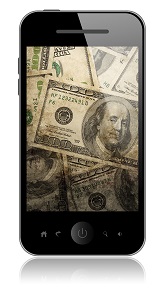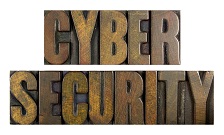 It may be the worst-kept secret in the payments industry that smartphones are taking over. Their ever-growing capabilities make everyday tasks easier: email, texting, managing your daily calendar – and now paying for goods and services has joined that list.
It may be the worst-kept secret in the payments industry that smartphones are taking over. Their ever-growing capabilities make everyday tasks easier: email, texting, managing your daily calendar – and now paying for goods and services has joined that list.
Transforming a smartphone into a payment platform has instigated a firestorm of competition that shows no signs of settling down. Business Insider highlighted four solutions leading the pack:
- Direct carrier billing: Buyers pay by text message. Think Red Cross donations, ring tones, and mobile gaming.
- Near-Field Communications (NFC): Buyers swipe the phone over a device at the point of sale. Think Google Wallet.
- Apps: Buyers use a proprietary, separately downloaded app to pay. Retailers like this method because they can apply customer-specific reward points or discounts.
- Card Readers: Merchants plug a card reader into their smart phone to swipe the buyer’s credit or debit card. Think Square or PayPal (whose device is triangular).
While the industry dukes it out on the platform, consumers have not yet made up their minds about the concept itself. While a PayPal survey found that “83% of consumers want to be wallet free,” an Associated Press survey found that 62% of them fear fraud when they purchase with a smart phone. So it’s coming, but it’s not here yet.
Meanwhile, debit and credit card usage have also hit speed bumps. According to CardHub, the prevalence of credit cards has dropped by nearly 64%, and the New York Federal Reserve tells us that in recent years Americans have reduced their outstanding debt by $1.3 trillion. The battle cry “Charge it!” no longer excites shoppers, and fraud has hit consumer confidence in these payment methods as well. In fact, the Wall Street Journal’s Market Watch discovered that in 2012 the “U.S. accounted for 47.3% of global card fraud losses.” As if that wasn’t bad enough, Card Hub adds that “retailers incur $580.5 million in debit card fraud losses and spend $6.47 billion annually on credit and debit card fraud prevention.” Massive security breaches at well-known national retailers didn’t help, either.
 Some consumers even go so far as to view their transactional security as important as their identity security because of the financial impact and headache a breach or failure can create. Since your goal is to serve your customer, you will probably want to accept every payment type you can. Checks are a critical component because, as the 2013 Federal Reserve Payments Study reports, “18.3 billion checks were processed in 2012, with a value of $26.0 trillion,” and you want to make sure your business can participate in this enormous amount of activity.
Some consumers even go so far as to view their transactional security as important as their identity security because of the financial impact and headache a breach or failure can create. Since your goal is to serve your customer, you will probably want to accept every payment type you can. Checks are a critical component because, as the 2013 Federal Reserve Payments Study reports, “18.3 billion checks were processed in 2012, with a value of $26.0 trillion,” and you want to make sure your business can participate in this enormous amount of activity.
However, every type of payment – from barter to cryptocurrency - exposes you to significant risks. These risks may not be apparent until they erupt into an extremely costly problem. Business owners who want to provide convenience and flexibility to their customers need to assess the risks associated with each payment type and, more importantly, to proactively manage those risks.
It’s not the sort of business planning most entrepreneurs consider until it’s too late, but we’ve made it easy for you. Download our guide, Accepting Payments 101, which can help you develop a payment acceptance plan that maximizes customer service while minimizing risk.



